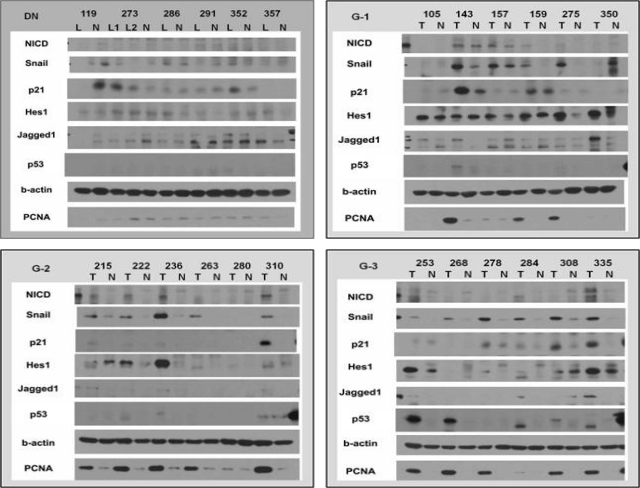| Korean J Hepatol > Volume 18(1); 2012 > Article |
ABSTRACT
Background/Aims
Methods
Results
Acknowledgements
REFERENCES
APPENDICES
Appendix Table 1
Comparison of proportional distribution rates of NSP patterns according to the differentiation grades of HCCs (n=162)

Appendix Table 2
*Comparison of proportional distribution of NSP patterns in p53↑, p53W↑, and p53M according to the differentiation grade

Appendix Table 3
Differences in changes in tumor size among the NSP patterns according to the HCC differentiation grades

Appendix Table 4
Differences in the incidence of microvascular invasion, portal vein invasion, and satellite nodule formation among the NSP patterns according to the HCC differentiation grades

Appendix Table 5
Differences in encapsulation status among the NSP patterns according to the HCC differentiation grades

Figure 1

Table 1

*Relationship between differentiation grade and each risk factor was analyzed by both chi-square test and Spearman's correlation test; †Analysis of capsular infiltration among HCCs with fibrous capsule formation surrounding tumor nodule, ‡Data about p53 mutations were available in 110 of the 147 HCC samples (Appendix Table 2).
Table 2

Table 3

*Only the portal vein invasion was statistically significant in both univariate and multivariate analyses, but other pathological risk factors were not significant, †Data was not available in three cases.
↑, overexpression greater than a 2-fold increase; Male-to-female ratios of total, recurrent and non-recurrent cases are 4.2:1, 8.5:1 and 3:1, respectively.
Table 4

*Tumor size, Notch1 and Snail expression states were significantly associated with relapse sites, but p53 states and other pathological risk factors except for tumor size were not significant, †Data was not available in three cases.
↑, overexpression greater than a 2-fold increase; DFI, disease-free interval.




 PDF Links
PDF Links PubReader
PubReader ePub Link
ePub Link Full text via DOI
Full text via DOI Full text via PMC
Full text via PMC Download Citation
Download Citation Print
Print




